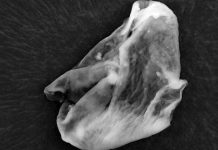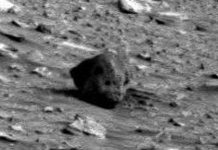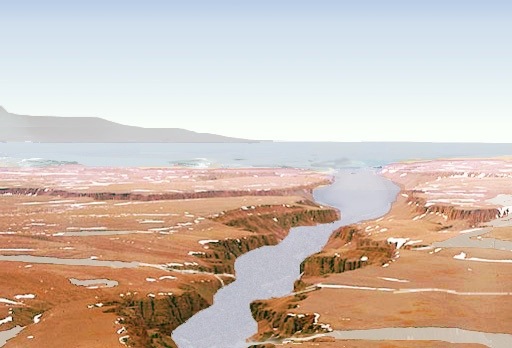
Martian Trees and Shrubs
Recently released photos, seen at right, taken by MGS look quite like aerial photos of an Earth desert dotted with shrub growth. But these sand dunes are in the southern hemisphere of Mars. A Hungarian research team, which has been analyzing the photos (and other photos of the same area over time), has concluded that the black dots are indeed living organisms.
“Each spring,” writes David Leonard in an article for Space.com, “[the Hungarians] report, ‘gray fuzzy spots’ appear in the bottom of the ice cover. By the middle of the first half of spring, these spots become darker, are bounded, and grow in size. By early summer defrosting, the naked dark soil of the dune is visible, and surrounded by a lighter ring. Year by year, the dark dune spots ‘renew’ on the same place with almost the same configuration, or ‘constellation’ of patches. This repeat action, the team asserts, strengthens their suggestion of fixed, biological causes of spot formation.”
The Hungarian scientists conclude that this strongly suggests the life cycle of some kind of plant life.
NASA and its associated research teams don’t agree with this conclusion. Their theory is that the dark spots are “the result of springtime defrosting process on Mars, not signs of biology.” A somewhat less dismissive opinion from Bruce Jakosky, a Mars researcher at the University of Colorado in Boulder, states that the conclusion for Martian biology is “premature… when other, simpler processes have not been ruled out.”
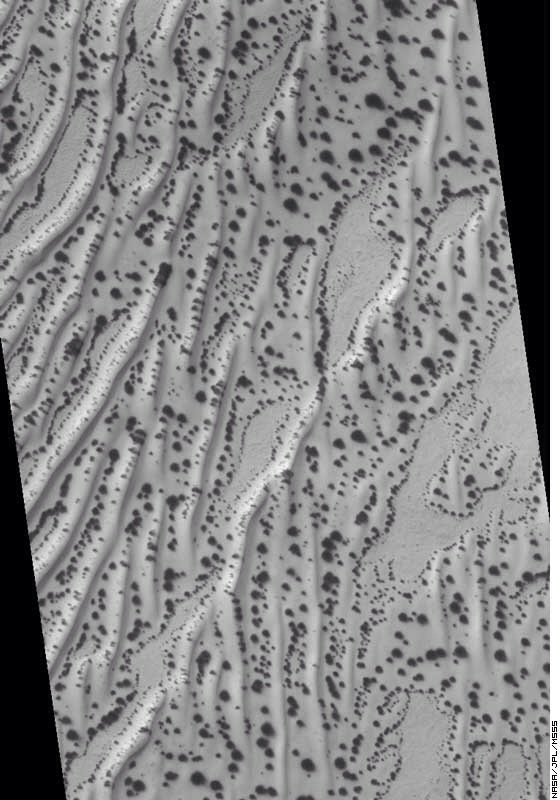
Alien Ruins?
Also there are many very interesting photos that show structures that do not look natural and have led some open-minded researchers to raise the possibility that they might be artificial – that is, created by intelligent beings.
One of the most fascinating images, pictured at right, shows a ribbed tube or tunnel-like structure. Partially covered by the surface terrain, the structure looks as through it has been unearthed (unmarsed?) by some geologic process. The structure resembles the so-called “glass worms” discovered in other photos, although this one lacks the “transparent” or “translucent” quality of the worms.
The official NASA stance on these structures is that they are quite natural and are, in fact, “dune trains” – rows of sand dunes. The article “Is This an Artificial Construct on Mars” compares this photo with another photo of actual Martian dune trains. They don’t look anything alike. While the photo of “actual” dunes indeed look like sand dunes, this enigmatic structure does not.
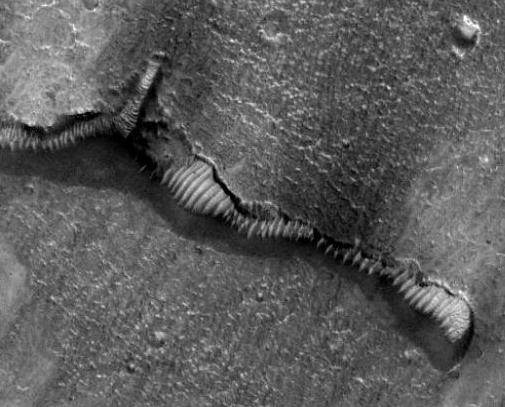

![20131126-223623[1]](https://coolinterestingnews.com/wp-content/uploads/2013/11/20131126-2236231.jpg)

